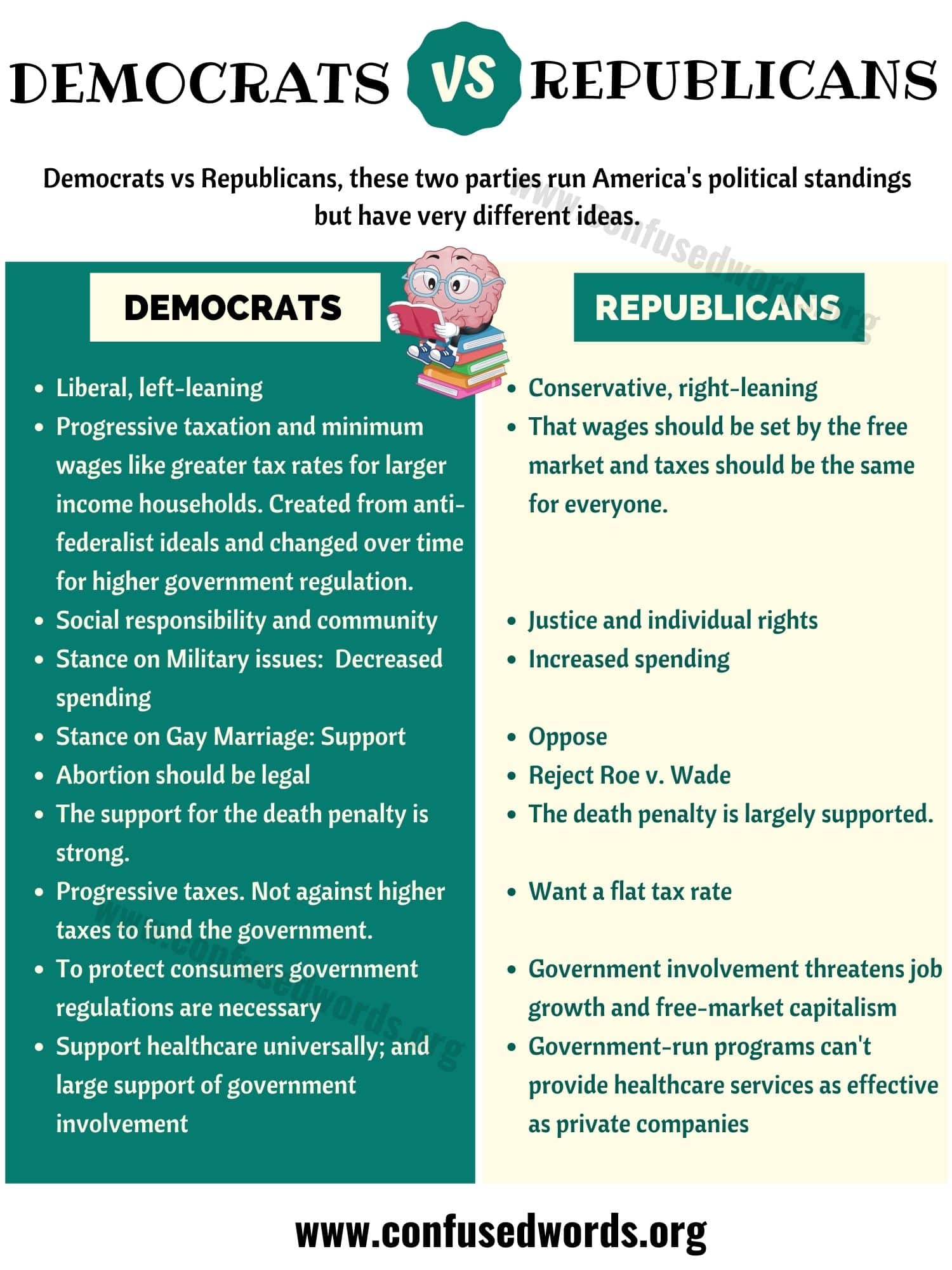The Complicated History of Democrats and Republicans in the US
The Early Years
In the early years of American politics, there was far less distinction between the Democratic and Republican parties than there is today. When the Democratic party was first formed in the 1820s, it represented the ideology of Jeffersonian democracy which emphasized limited government and stronger states’ rights. However, the party was also home to factions with varying stances on issues like slavery and westward expansion. Similarly, when the Republican party emerged in the 1850s in opposition to the expansion of slavery, it contained a diversity of views even on this core issue. Both parties acted as big tents that encompassed numerous regional and ideological interests.

The Civil War Divides the Parties
The Civil War in the 1860s served as a turning point that began aligning the parties around clear regional bases. The Republican party became synonymous with the Union states of the North while the Democrats had strong support in the slave-holding South. This was evidenced by the 1860 election where Republicans rallied behind Abraham Lincoln on an anti-slavery platform while Southern Democrats refused to appear on ballots in states they felt strongly supported the Union. As the aftermath of the war unfolded, Republicans led the charge for Reconstruction policies like emancipation and extending citizenship and suffrage to freed Black Americans over Democratic resistance.
Shifting Dynamics in the Post-Bellum Era
In the decades following the Civil War, changing demographic and economic conditions altered the composition of each party. Through their support of civil rights for Black Americans, Republicans attracted a core base of African American voters in the South. However, their increasingly pro-business stances alienated a new generation of Northern Democrats who represented an emerging urban working class. Democrats also courted immigrant communities with their populist stances on issues like currency policies. By the late 19th century, Republicans emerged as the party of big finance and industry while Democrats found support among coalitions of small farmers, manual workers, and various immigrant groups.
The New Deal Coalition
The stock market crash of 1929 and ensuing Great Depression devastated the country, fundamentally reshaping partisan alignments. Franklin D. Roosevelt responded with sweeping New Deal programs that dramatically expanded the role of the federal government in providing relief, creating jobs and regulating the economy. His administration defended these policies with Keynesian theories emphasizing state intervention to lift the nation from crisis. This cemented Democratic control of the presidency for over 30 years and redefined liberalism around defense of the welfare state. As Republicans opposed many New Deal initiatives, they increasingly projected an image as the party of small government and fiscal conservatism.
The Civil Rights Era
After World War 2, sectional tensions lurked beneath the surface of American politics. Democratic President Harry Truman’s 1948 order desegregating the military upset the party’s traditional Southern base. His stand intensified a ideological rift that exploded in the 1950s-60s Civil Rights era. Democrats under John F. Kennedy and Lyndon B. Johnson championed the momentous Civil Rights Acts of 1964 and Voting Rights Act of 1965 over united Republican opposition. However, this costly pivot on racial issues alienated many Southern Democrats who felt betrayed after a century of dominance. They bolted to join Republicans appealing to ancestral white Resistance to integration, initiating a political realignment transforming the once “Solid South.”
Emergence of New Alignments
Nixon advisor Kevin Phillips saw an opening to win Southern votes through a “Southern Strategy” that inflamed racial anxieties without stating it directly. His success confirmed this approach, though GOP faces publicly denied explicit appeals to racism. Beginning in 1980, Ronald Reagan polished racial coded language to trounce Jimmy Carter and claim most Dixieland states for good. Around this time, American liberalism solidified with Democrats as evangelicals and cultural traditionalists swelled GOP ranks. These seismic shifts established the durable partisan configurations that largely endure today with largely Republican-leaning South and Great Plains versus Democratic northeastern seaboard and West Coast.
Lingering Complexities
However, plenty complications remain in unpacking the two parties’ evolutions. Ideological mutations preceded changes to geographical bases as economies transformed. Regional identities faded gradually rather than abruptly. Many local Democratic officials clung to statehouses across the South into the 2000s. Terms like “Reagan Democrat” acknowledged cross-pressured loyalties as millions sorted between new partisan homes. Democratic inroads occurred too with Latinos and suburban whites. Party factions span the ideological spectrum on issues like trade, environment and fiscal prudence. Perhaps enduring is that fluid lines let each appeal broadly enough to compete nationally and maintain two-party democracy’s creative tensions.
